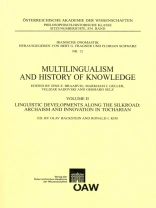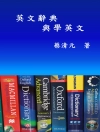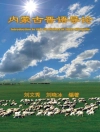Das Tocharische, ein erst im letzten Jahrhundert entdeckter Hauptsprachzweig der indogermanischen Sprachfamilie, dessen Sprecher am Rande der Seidenstraße im zentralasiatischen Tarim-Becken lebten und der Ende des 1. Jahrtausends n. Chr. ausstarb, gewinnt in den letzten Jahrzehnten in der historisch-vergleichenden indogermanischen Sprachwissenschaft zunehmend an Bedeutung. Der rasante Fortschritt in der sprachhistorischen Erschließung des Tocharischen hat in vielen Fällen zu einer Revision von Entwicklung und Rekonstruktion der indogermanischen Grammatik geführt. Viele Studien aus jüngerer Zeit haben eine Anzahl wahrscheinlicher Archaismen in Lexikon, Morphologie und Syntax aufgedeckt, die mitunter noch einen Zustand konservieren, der älter ist als der, der vom Griechischen und Indoiranischen reflektiert wird. Der vorliegende Band vereint eine Serie von Vorträgen, die anlässlich der Ringvorlesung „Indogermanische Sprachen und Kulturen an der Seidenstraße“ im Sommersemester 2009 an der Ludwig-Maximilians-Universität München von führenden Vertretern des Faches gehalten wurden und der Frage sprachlicher Archaismen und Innovationen des tocharischen Sprachzweiges gewidmet sind. In ihren Ergebnissen demonstrieren die Beiträge die Brisanz und wachsende Bedeutung des tocharischen Sprachzweigs für die Indogermanistik. Sie behandeln viele thematische Brennpunkte der indogermanistischen Diskussion vergangener Jahrzehnte wie z. B. die Entwicklung der nominalen Genera des Indogermanischen, die Entwicklung des indogermanischen Verbalsystems und der Kasusfunktionen.
After decades of relative neglect, the Tocharian languages are assuming an increasingly prominent role in Indo-European studies. The enormous progress in Tocharian historical phonology and morphology since the 1960s has called into question the longstanding perception of this branch as an aberrant offshoot, of little importance for the reconstruction of Proto-Indo-European. Recent studies, particularly of the verb but also of the noun, phonology, and lexicon, have uncovered a number of probable archaisms, reflecting an older state of affairs than that reconstructible on the basis of the classical Indo-European languages alone. New progress in Tocharian paleography has also led to a greatly improved understanding of the evolution of Tocharian B, and the stages of the language represented in our surviving documents. The present volume arose from a series of lectures delivered in 2009 on the theme of “Indo-European Languages and Cultures on the Silk Road” at the Ludwig-Maximilians-Universität Munich, together with contributions from other leading names in Tocharian linguistics. The papers included here treat problems of Tocharian grammar which are of direct relevance for the reconstruction of Proto-Indo-European, and for determining the place of Tocharian among the Indo-European languages. They demonstrate the importance of Tocharian for some of the most intensely discussed problems of contemporary Indo-European linguistics, such as the prehistory of the collective and feminine, nominal derivation and ablaut, or the reconstruction of the verbal system.
…
Jens E. Braarvig & Markham J. Geller
Multilingualism and History of Knowledge, Volume II [PDF ebook]
Linguistic Developments along the Silkroad: Archaism and Innovation in Tocharian
Multilingualism and History of Knowledge, Volume II [PDF ebook]
Linguistic Developments along the Silkroad: Archaism and Innovation in Tocharian
यह ईबुक खरीदें और 1 और मुफ़्त पाएं!
भाषा अंग्रेज़ी ● स्वरूप PDF ● पेज 227 ● ISBN 9783700175063 ● फाइल का आकार 1.6 MB ● संपादक Jens E. Braarvig & Markham J. Geller ● प्रकाशक Verlag der österreichischen Akademie der Wissenschaften ● शहर Wien ● देश AT ● प्रकाशित 2012 ● संस्करण 1 ● डाउनलोड करने योग्य 24 महीने ● मुद्रा EUR ● आईडी 3396705 ● कॉपी सुरक्षा के बिना












